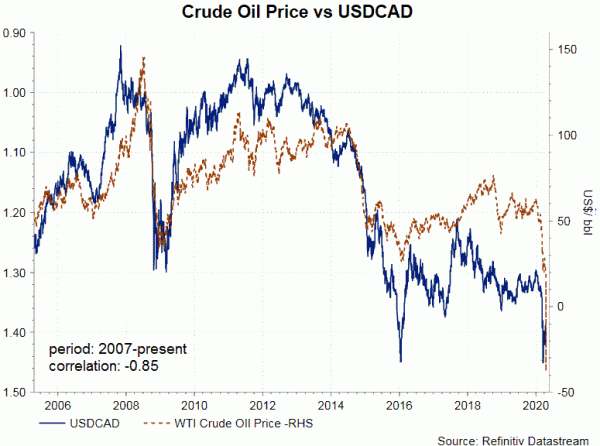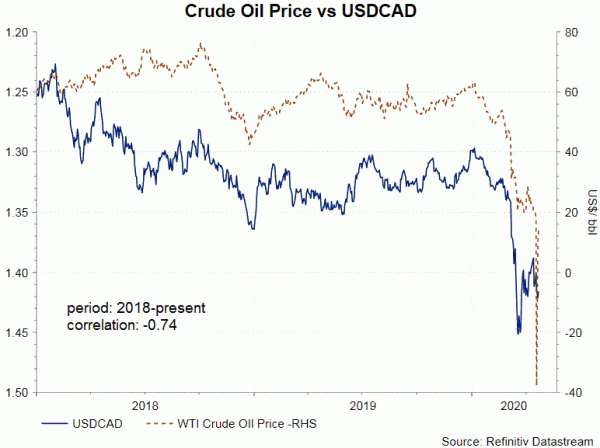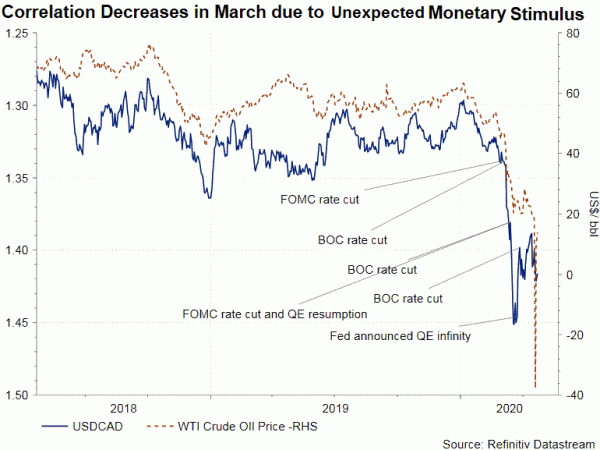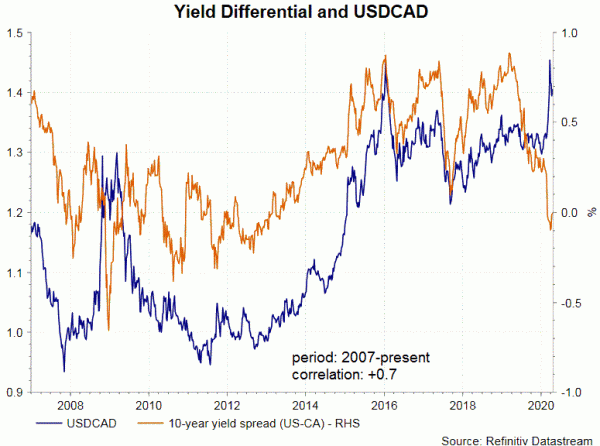Canadian dollar has only edged lower amidst the recent collapse in crude oil price. This is not usual given the strong correlation between the loonie and oil price, as well as the contribution of the energy sector to the country’s economy. We believe the FX market has not fully reacted to the recent selloff in crude oil price.
Crude oil price and yield differential, among other factors, are most highly correlated to the movement of USDCAD. Oil price has significant influence on Canada’s economy. Canada is the world’s 6th largest oil producer and the 5th largest net exporter. The energy sector contributes to about 10% of the country’s GDP. Production cut deal by OPEC+, and potential output cut in the US in light of insufficient storage facilities, might contain price weakness in coming months. However, it will take much longer time for oil demand, destructed by the coronavirus pandemic, to recover, suggesting that price will remain depressed for prolonged period. The path to recovery of Canada’s economy could be delayed even after removal of the containment measures. As such, the negative impact on the loonie will persist for some time.
The charts below show the correlation between WTI crude oil price* and USDCAD in different time horizons. The two assets have demonstrated strong negative correlation in both long and medium timeframes. That is, Canadian dollar depreciates against US dollar as crude oil price declines. The relationship appears to have faded over the past few weeks. Yet, we contend that it is derailed by the unscheduled monetary moves announced by BOC and FOMC in response to the economic downturn. After Fed’s first emergency rate cut on March 3, BOC also lowered its policy rate, by -50 bps, at the March meeting. This was followed by an unscheduled rate cut, also by -50 bps, on March 13. FOMC’s resumption of QE on March 15 was a disappointment to the market. The resultant selloff in the loonie was more severe than what was suggested by the decline in oil prices alone. The game changer was Fed’s announcement of QE infinity – unlimited purchases of Treasuries and mortgage-backed securities- on March 23. The move had caused a broad-based depreciation in the greenback.
The chart below shows that yield differential is also influential on USDCAD. Both Fed and BOC have lowered the policy rates at record lows and have kicked off QE. Fed has already pledged to QE infinity last month, while there is room for BOC to extend and expand the QE program further. Besides the collapse of crude oil price, economic data released since last week’s meeting were disappointing. Headline CPI slowed to +0.9% y/y in March, from +2.2% a month ago. The market had anticipated moderation to +1.2%. Core CPI eased to +1.6% from +1.9% in February. BOC’ three inflation gauges decelerate across the board, averaging at +1.83% in March (+1.97% in February). If BOC considers to add more asset purchases, it could widen US-CA yield differential, bringing further weakness to Canadian dollar.
*The type of oil that comes from Canada’s oilsands is known as Western Canadian Select (WCS). WTI crude oil is used for comparison as it is more liquid and widely-traded

















